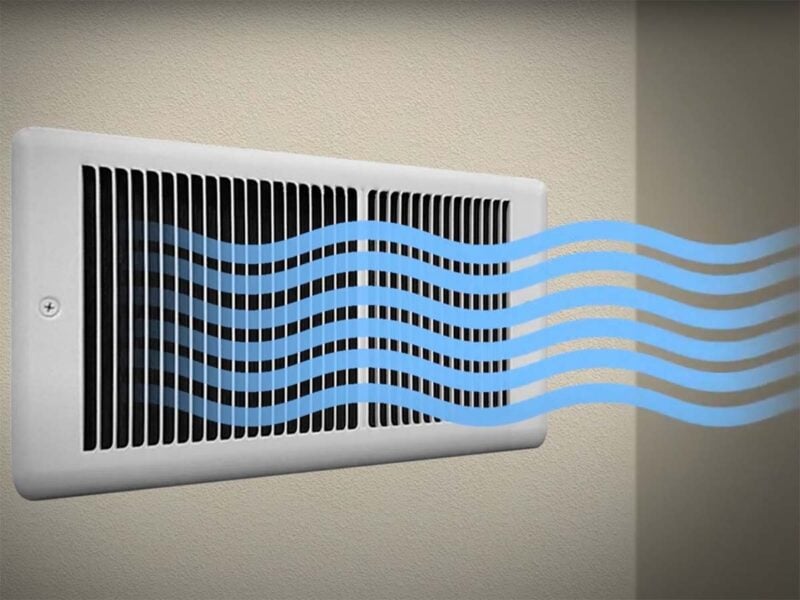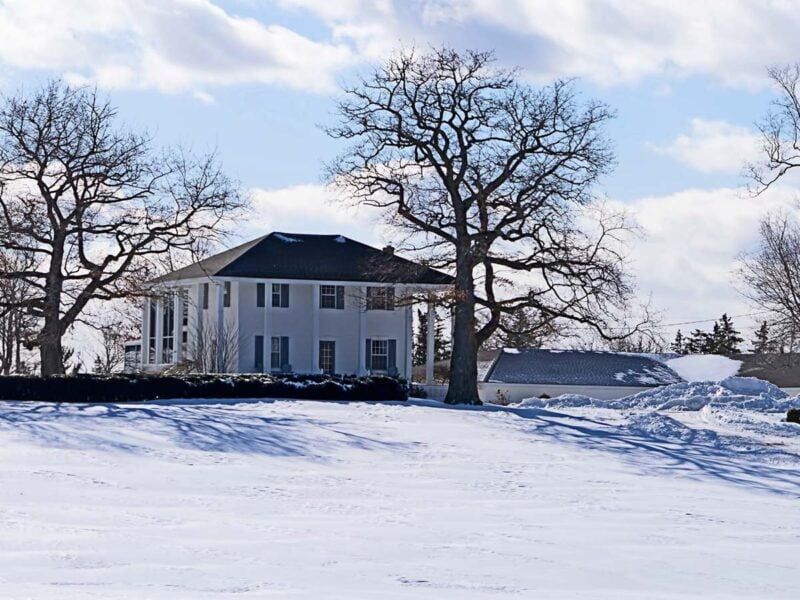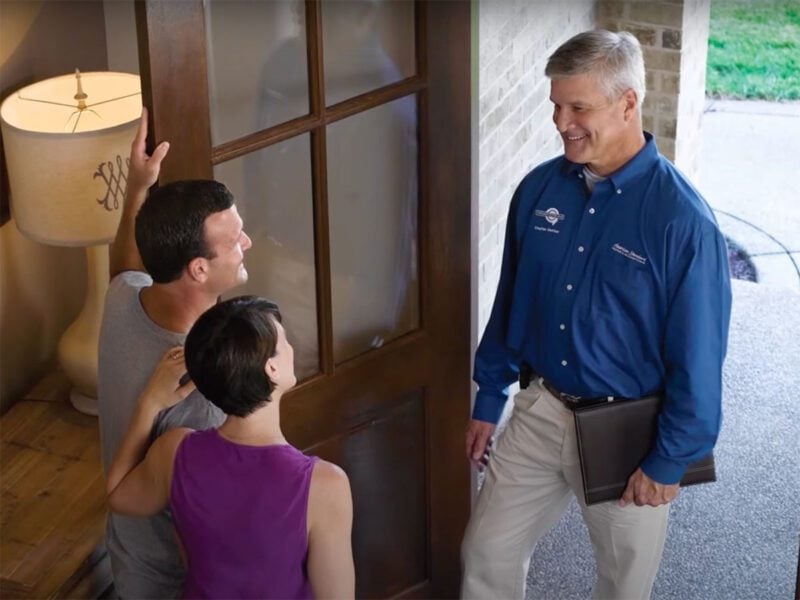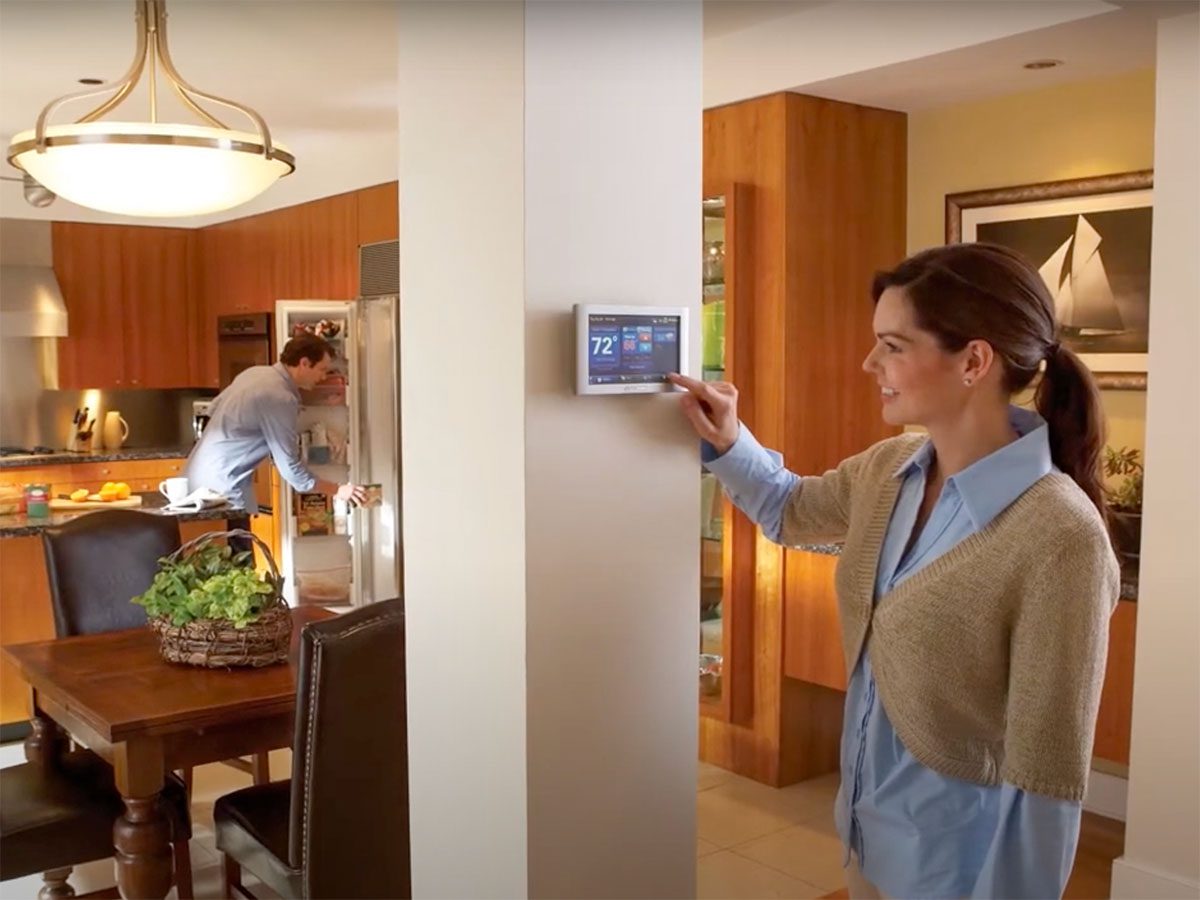As the summer heats up, you might think it’s a little odd that we’re talking about heat pumps, but did you know they can both heat and cool your home? We’re teaming up with American Standard Heating and Air Conditioning to share more about how a heat pump system can help you stay comfortable year-round while reducing or eliminating your need for natural gas.
How Heat Pumps Keep You Comfortable

To understand how heat pumps can use electricity to both heat and cool your home, we need to understand two basic concepts (don’t worry—we’ll skip the full-blown physics lesson):
- Heat energy always transfers toward what’s colder
- Compression heats gas up, expansion cools it down
Using these two ideas, we can follow the refrigerant to see how a heat pump heats your home when it’s cold outside:
- Refrigerant at high temperature and pressure exits the compressor and travels to the indoor heat exchanger as a vapor.
- A fan draws colder air from inside your home across the hot coils condensing the refrigerant to a liquid, which transfers heat energy to the air, and then blows the heated air back into your home.
- The refrigerant, now cooler because of the heat it gave up, heads to the expansion valve where it expands, getting much colder.
- The refrigerant then travels to the outdoor heat exchanger. Even though it’s cold outside, the refrigerant is colder, so the fan blowing outside air across it transfers enough heat energy back to the refrigerant to turn it into a vapor.
- Returning to the compressor at a low temperature and pressure, the refrigerant is compressed to high pressure and greatly increases in temperature to repeat the cycle.
To cool your home when it’s hot outside, a heat pump simply reverses the process.
- Refrigerant at a high temperature and pressure leaves the compressor and travels to the outdoor heat exchanger as a vapor.
- Hotter than the outside air, the refrigerant gives off heat energy on its way to the expansion valve and begins to condense.
- The expansion valve now expands the refrigerant, making it much colder as it travels to the indoor heat exchanger.
- A fan draws warm interior air across the cold coils, cooling it down, and sends it back into your home.
- Now cooler, the refrigerant heads back to the compressor to be compressed and heated before repeating the cycle.
To put it more simply, when it’s cold outside, a heat pump extracts what outside heat is available and transfers it inside. When it’s warm outside, it reverses direction and acts like an air conditioner, removing heat from the home.
Aren’t Heat Pumps Ineffective in Cold Climates?

While it’s true that older heat pump designs had trouble heating effectively once the outside temperature neared freezing, American Standard’s current variable-speed heat pumps are more efficient at heating in cold temperatures than ever before. New heat pumps are being developed to be able to run below -10 ℉.
Even if you experience harsh winters, there’s the option of a dual-fuel system. In this case, you pair a heat pump with a furnace, instead of an air handler. In this hybrid system, the heat pump cools in the summer and heats well into the fall, but when temperatures get too cold, the gas furnace kicks in to provide supplemental heat.
For an electric solution, you can use an air handler with supplemental electric heat to assist with your heat pump.
Money Matters

Efficiency Gains
One of the big draws to a heat pump system is how much money you can save on your heating and cooling bills. Some of the most efficient models can reduce your heating and cooling costs by up to 50% when installed as part of a matched system, replacing older units.
Among heat pump options, variable-speed systems are the most efficient, so they’ll save you the most on your electric bill. Plus, they’re able to maintain precise temperature and humidity control and are the quietest HVAC systems.
Another nice benefit is the ability to lower your carbon footprint by reducing or eliminating your need for heating with natural gas.
Take American Standard’s AccuComfort Variable Speed Platinum 20 Heat Pump as an example. This is one of the industry’s most efficient systems on the market, with ratings up to 22.4 SEER2 and 10.5 HSPF2. It’s a state-of-the-art, multi-stage heating and cooling system that consistently adjusts to run at a more efficient speed and operates at a quiet level to maintain optimal levels of comfort. Plus, it’s already running next-generation low-GWP refrigerant.
Installation Cost Considerations
Some people are hesitant to consider heat pumps because of the cost. However, opting for a heat pump on a new system might be closer in price to an AC and furnace combo than you realize.
If you consider the long-term cost reductions in the form of energy savings, upgrading an old or traditional HVAC system to a heat pump system can save the majority of homeowners hundreds, if not thousands. If you want to upgrade an existing HVAC system, some people worry about making electrical upgrades. If you have a furnace, it’s true that the wiring might not match the requirements of most heat pumps. However, American Standard developed the P-Series Modular Variable Speed Air Handler specifically to run on the same wiring as most furnaces without the need to upgrade your electrical system.
New Refrigerant Requirements

Beginning on January 1, 2025, industry regulations now require newly manufactured HVAC systems to use refrigerants with lower global warming potential (GWP). Don’t let that worry you. When you go with an American Standard system, their latest line of energy-efficient HVAC products is designed with sustainability in mind, fully compliant with new refrigerant regulations, and built to help lower your energy bills.
The Case for American Standard Heat Pump Systems

You have plenty of choices when it comes to choosing an HVAC system, but going with the wrong one could leave you disappointed with the results or in need of costly upgrades.
When you choose American Standard for your heating and cooling needs you can be confident knowing they offer a broad portfolio of energy-efficient heating, ventilating and air conditioning systems, parts support, and advanced controls to help families feel more comfortable and breathe easier in their homes.
Their HVAC systems are tailored to your unique home environment and comfort needs. They’re designed to work smarter, not harder, using just the right amount of energy to help ensure your family’s comfort, and potentially saving you money in the process.
American Standard heating and cooling systems are known for their durability and dependability. Their systems are robust enough to stand the test of time (and weather), and American Standard Customer Care Dealers are there to help from installation through regular maintenance and repair.
When you choose a model enabled with American Standard Link Communicating System, you can remotely adjust settings through the American Standard Home App and receive proactive alerts so you know your system is working at its best. Link-enabled smart thermostats, like American Standard’s Link UX360, allow easy and convenient control from any web-enabled device, send tune-up reminders, and track humidity levels.
Ready to talk to an expert about upgrading? Call your local HVAC technician or American Standard Customer Care dealer to discuss installing a heat pump and other methods for home electrification.



